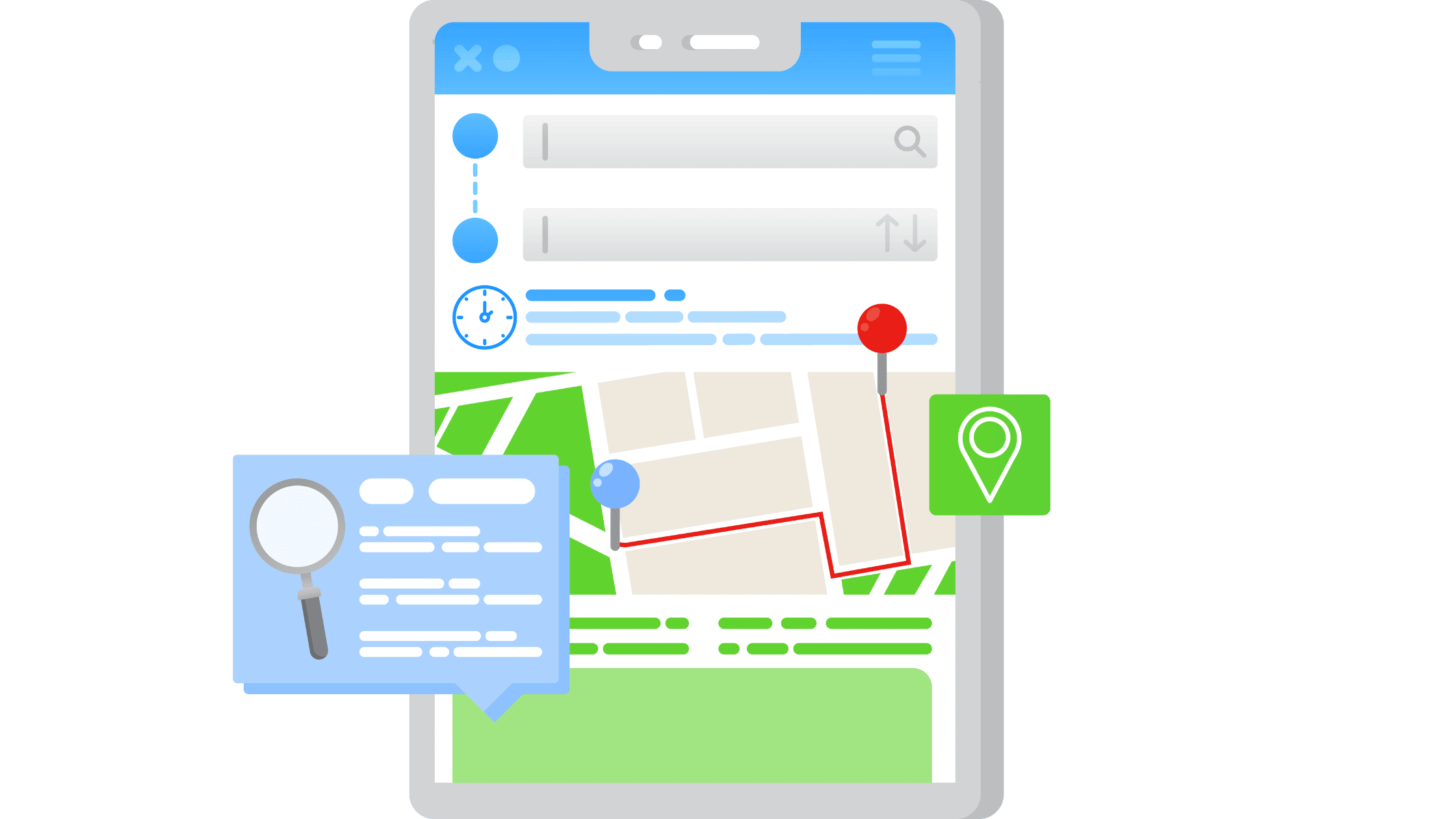SEO for Law Firms: The Verdict on Dominating Google Rankings
When people need legal help, where do they turn first?
The answer, of course, is the internet.
With just a few keystrokes or taps on their screen, potential clients can access a deep well of information about legal services in their area.
If your firm’s Google Business Profile and website aren’t showing up on the first page of results, you’re missing out on a massive sector of your target audience.
While working with a law firm SEO expert like NATIV3 is your best bet for ensuring your practice appears in Google search results, we understand you might want to give it a shot yourself before investing in a digital marketing team. So, we’ve put together a beginner’s guide to help you get started!
At the end of our article, you’ll understand:
- The basics of search engine optimization (SEO) and why you should care about how well your law firm website ranks.
- How search engines work and what goes into determining search results.
- What an SEO ranking factor is and how to leverage Google’s algorithm to your advantage.
- The differences between on-page, off-page, and technical SEO for law firms.
- How to conduct keyword research and what to do with the keywords after you have them.
- Why writing high-value content is the best way to attract prospective clients and rise up the search engine result pages.
- How to achieve local SEO success so your law firm website appears to the searchers most likely to be future clients.
Contents
Chapter 1
What is Search Engine Optimization and Why Does it Matter for Law Firms?

Search engine optimization, known as SEO, is a set of “best practices” for increasing your law firm’s website visibility and visitors by improving your organic search results ranking on search engine results pages.
If you’re already familiar with SEO in any capacity, you likely already recognize that being in the #1 spot for a given keyword is the golden ticket to driving website traffic, but sticking a bunch of legal terms on a web page– a practice called “keyword stuffing”– just isn’t going to cut it. There are simply too many variables to consider regarding organic rankings.
But that doesn’t mean that optimization isn’t worth your attention.
With a powerful law firm SEO strategy, you can harness the power of Google’s ever-changing ranking algorithms to tap into your target audience looking for law firms with the information and services they’re looking for.
And, given that online search is the #1 way for clients to find legal services, spending some quality time on law firm SEO is absolutely necessary if you want to compete with other law firm websites.
Chapter 2
How the Google Search Engine Works

Before discussing the fundamentals, let’s discuss why we’re emphasizing Google rather than other search engines.
When 500 people were asked, “If you were involved in a car accident and wanted to get in touch with a lawyer afterward,” here’s how the results broke down:
- 64% of participants said that they would start with Google
- 30% said they would ask a friend or family member for a recommendation
- 1% said they would consult Yellowbook
- 1% said they would search on Yelp
- 1% said they would post on Facebook
- One person mentioned Bing, one person mentioned Yahoo, and five people mentioned DuckDuckGo
Similar results are reflected across all industries, not just law firms.
According to Statista, Google dominates 85.53% of all market share for desktop search engines in 2023, while Bing comes in 2nd at 8.23%. Third is Yahoo’s 2.44% share, with Yandex (1.42%), DuckDuckGo (0.74%), and Baidu (0.41%) trailing far behind.
We cannot deny that Google is the modern world’s go-to information hub and where your prospective clients are most likely to search for legal help. It makes sense to prioritize understanding Google’s intricacies to maximize your search engine optimization efforts.
So, let’s start with a behind-the-scenes peek at the mechanisms that bring your law firm’s website to a search engine results page.
Crawling
Search engines deploy a team of bots, often called crawlers, to comb through websites looking for new or updated pages in a process called “URL discovery.”
For your law firm website to rank in search engines, you have to make it “crawlable” and bring it to Google’s attention by either having a live link to the page somewhere online or submitting your sitemap directly.
During crawling, the bots look for indicators of what’s on the page, like text, images, videos, ads, or interactive media.
Indexing
Once a page is crawled, it moves into the indexing phase, when technical and on-page SEO for law firms matters.
During indexing, Google’s machine learning algorithm scans through the text, meta tags, and any other on-page content to determine whether the page is original or a duplicate.
If it’s the original or “canonical” page, it’s the one that appears on most search engine results pages when its content matches a searcher’s target keyword.
If not, it’s “clustered” with the canonical page and any other page on the internet that is similar, which means that the law firm appears only when users perform a branded search like “Smith, Smith, and Clark law firm personal injury lawyer” or “Peabody law firm divorce process.”
That’s why it’s important to write fresh, original content. If your law firm’s website shares too much duplicated content with an older law firm website in the index, your SEO efforts are negated because the canonical page is what gets served.
Indexing is also why there’s so much concern about how AI content might affect search engine rankings. AI programs, even the most robust of them, cannot replicate the variety that naturally exists in human writing.
That means that two users who type in similar prompts will likely get identical or very similar results back, which will inevitably lead to issues with web pages being clustered with the canonical page and never increasing its visibility.
Serving Search Results
In order for Google to serve up page after page of relevant search results, it’s constantly chugging away behind the scenes to evaluate what content best matches the primary keyword and user intent while providing the information in a well-organized, intuitive manner.
As such, it’s at this point that on-page, off-page, and technical SEO come together to determine where a particular webpage will appear amongst the search results. With that, let’s spend some time discussing what components of law firm SEO matter most to search engines.
Chapter 3
Search Engine Ranking Factors

Google uses an estimated 200 different criteria in their algorithm to evaluate a web page’s ranking, some of which are confirmed and many which are not.
High-Value, Well-Written Content
The first rule to remember when developing your law firm SEO strategy is that you have to write for people, not search engines. It is the most important legal SEO ranking factor because producing content on your law firm’s website is the only way to appear in the search results. Any other SEO efforts are null and void without content.
Every piece of content you produce should provide your website visitors with value, whether it’s what to look for when choosing a personal injury lawyer or what a recent change to legislation means for divorce proceedings.
It should absolutely include your target keywords and follow search engine optimization best practices, but first and foremost, it must exist to inform, entertain, or persuade a real human being. If Google’s search engine crawlers think your content is just a bid to show up in Google’s organic search results without providing any particular value to the reader, they will penalize the page, driving down your rankings even further.
A perfect example of this is “keyword stuffing,” which Google defines as “the practice of filling a web page with keywords or numbers in an attempt to manipulate rankings in Google Search results. Often these keywords appear in a list or group, unnaturally, or out of context.”
So, for example, if you’re optimizing for the term “personal injury law firm,” a keyword-stuffed snippet of your content might look like this:
“Have you been looking for a personal injury law firm? Our personal injury law firm is here to help you! Our personal injury law firm believes in standing up for our client’s rights. With our personal injury law firm, you’re never alone.
You might be wondering, what does a personal injury law firm do? Well, a personal injury law firm specializes in representing those who have been injured due to someone else’s negligence. Our personal injury law firm is dedicated to helping you get the compensation you deserve.”
Not only does this content provide no real value to readers, but it is also a clear case of a law firm attempting to purposefully manipulate its website’s search engine rankings by using the keyword more times than its competitors.
Google’s EEAT Policy Grader Guidelines explain what kinds of content are most like to rank highest on search engine results pages:
- Experience: The author’s personal experience with the topic, which is particularly relevant for product or service reviews.
- Expertise: Readers want to hear from the experts, especially when their search queries pertain to legal issues. Demonstrate your knowledge in a reader-friendly and engaging way.
- Authority: There’s not much you can do in the short term to increase your authority, which is just a measure of your online “reputation.” It’s why Wikipedia is almost always the first result when you type in a more general, informational search term. In most cases, Wikipedia has well-sourced, correct information frequently linked across the internet, demonstrating its online authority.
- Trustworthiness: The content you write should be accurate and accessible to the reader. When website visitors stop on your page, they shouldn’t have to contend with ads, pop-ups, and endless outbound links to questionable sites. They should be able to trust that your page will answer their question without worrying about nefarious money-making schemes or virus downloads.
Relevance to Target Keywords
Relevancy is, unsurprisingly, how relevant the primary keyword of a piece of content is to the searcher.
The more specific the primary keyword in the query, the fewer results appear as other pages become less and less relevant. Not only do you have less competition to rank against, but you also increase your relevancy for organic search traffic that is more likely to convert into clients because they’re looking for precisely what you have to offer.
User Intent
User intent helps further narrow down the results by classifying queries into three basic categories: transactional, informational, and navigational.
- Transactional or “Do” searches are those in which the user wants to complete an action, like making a purchase or completing an online appointment form. They’re more relevant to e-commerce sites.
- Informational or “Know” searches are the most important type of SEO for lawyers because they consist of searchers who want to learn about a particular topic. Because you’re an expert in legal issues, you have a prime opportunity to create high-authority, trustworthy content that answers common questions about your specific field of law.
- Navigational or “Go” searches consist exclusively of branded queries. Whenever someone looks up your law firm by name, they perform a navigational search.
There’s an excellent piece on Search Engine Journal that gets into the nitty-gritty of search intent (surprise! It’s incredibly complex!) if you want to know more.
Page Speed
The importance of having web pages that load in 3 seconds or less is twofold:
- Since 2010, Google has used page load time to determine search engine results. In a head-to-head battle of two equally well-written and authoritative pieces of content targeting the same primary keyword, the faster one wins.
- The likelihood that your website traffic bounces or exits the page increases by 32% as page load time increases from 1 second to 3 seconds.
We’ll explain how to monitor and correct your law firm’s website load speed as part of your on-page, technical SEO for law firms practices a bit further down.
Mobile-Responsiveness
Mobile responsive refers to sites that automatically adapt to various screen sizes across devices, such as cell phones and tablets. Considering that more than half (58.33%) of all global web traffic came from mobile devices in the first quarter of 2023, it becomes clearer why lawyer SEO includes mobile optimization as a top priority.
Apart from the obvious fact that you don’t want to isolate mobile users from being able to access your law firm’s website efficiently, Google will actually penalize sites that lack mobile responsiveness by ranking other optimized sites above it in the search results, even if your content has superior information driven by in-depth keyword research.
User Experience
As we touched on in the “High-Value, Well-Written Content” section, your law firm’s website should serve as a resource for prospective clients, including providing an excellent user experience. Like page speed, Google will rank web pages with a better UX higher than a similar page with a poor UX.
So, what does providing an excellent user experience entail? Google provides a self-assessment that provides insight into what their search engine crawlers are looking for when determining whose content gets served on a search engine results page:
- Do pages have good Core Web Vitals?
- Are pages served securely?
- Does content display well for mobile devices when viewed on them?
- Does the content lack excessive ads that distract from or interfere with the main content?
- Do pages lack intrusive interstitials?
- How easily can visitors navigate to or locate the main content of your pages?
- Is the page designed so visitors can easily distinguish the main content from other content on your page?
You can check out their article “Understanding page experience in Google Search results” for more information and resources to help you create the kind of UX that keeps website traffic coming as your rankings rise.
Domain Authority
Moz developed its Domain Authority score to predict the likelihood that a website is to rank in a SERP. The score ranges from 1-100. A higher score means that your law firm is more likely to appear higher in the results, while a lower score indicates that your site is less likely to rank.
While it’s not one of Google’s many ranking factors, your DA is still something to consider as you dive into your attorney search engine optimization efforts. The legal services field is highly competitive, and tracking your DA can help you edge out other law firms trying to attract organic traffic.
It also helps build credibility and trust with your visitors, as higher DA scores are more likely if a law firm website has been around for a while, offers high-quality content that others find valuable, and has an impressive backlink profile.
Finally, a higher DA makes for a more appealing proposition if you’re reaching out to other websites for link-building opportunities. If your site is highly regarded in terms of rankability, whoever you partner with is in the position to gain more “link juice” and increase their own rankability.
Backlink Profile
Whenever an external, legitimate web page includes a link to your law firm’s website, you increase your EEAT score. Search engines consider this practice of “backlinking” as proof that other content creators trust your content and feel that you have enough authority to serve as a source of information that their readers might find helpful.
Earning backlinks is challenging because it entirely depends on other people. While you shouldn’t rely on it as the lynchpin of your legal SEO efforts, you should see your link-building profile grow as your content gains visibility through other optimization practices.
Chapter 4
On-Page SEO for Law Firms

On-page SEO is the most exciting and easily-accessible type of lawyer SEO because it’s the part you have the most control over, as it exclusively focuses on what’s on your website.
But it can still be pretty tricky and time-consuming, especially if you don’t have a backlog of content to work with.
No worries, though. We know you want to make changes that matter today, so we’ve put together some steps you can take even if you’re not planning to hire a law firm SEO expert anytime soon.
Step 1: Conduct Keyword Research
A solid foundation based on keyword research is at the heart of any SEO success story. When potential clients open their browsers to find legal assistance, they use specific search terms or keywords. Search engines then return a list of relevant, high-quality results.
If you don’t have content on your website that pertains to those keywords, or your content is poorly written and underoptimized, other law firms that put the time into lawyer SEO best practices will outrank you.
Worst yet, you might not even appear on the first SERP, the digital equivalent of being banished to organic obscurity.
Now, how should you go about conducting keyword research to tempt potential clients to your website?
Invest the time into getting friendly with tools like SEMrush, Ahrefs, or Google Keyword Planner. These platforms are your one-stop shop for information about keyword volume (how many people are searching for a keyword), keyword difficulty (how hard it will be to rank for a keyword), and variations of your chosen keywords.
Start by creating a list of keywords that directly pertain to your legal services. For instance, if you specialize in personal injury cases, your list might include terms like “personal injury lawyer,” “accident attorney,” or “slip and fall lawyer.” Then, combine these keywords with your location to create location-specific keywords like “personal injury lawyer in New York.”
SEO for lawyers and any other industry requires good-natured espionage. Look at which keywords your competitors are ranking for to swipe a few keyword ideas and get an idea of how other law firms are getting clicks. SEMrush’s Domain Overview gives you a detailed analysis of your competitor’s keywords.
Search trends can change over time due to changes in legislation or seasonal patterns. Stay updated and adapt to the search cycles to capitalize on timely information.
As your firm evolves and search trends change, refine your keyword strategy. Make it part of your attorney SEO strategy to regularly assess what your potential clients are searching for and why, then make the content most likely to appeal to their needs.
Step 2: Optimize Your URLs
A well-structured URL provides both users and search engines with a clear indication of what the page is about. It’s a seemingly small detail, but it matters. When your rankings come down to the little things, you’ll be glad you took the time to overhaul your URL structure when your search traffic leaves other law firms in the dust.
Your URLs should include relevant keywords that accurately represent the page’s content. For example, if you have a page dedicated to your personal injury legal services, the URL could be “www.yourlawfirm.com/personal-injury-law-services.” Not only does this tell users exactly what the page is about, but crawlers can also use those URL keywords to understand the relevance of the page content to the search term.
Size matters, too. According to a study by Backlinko, shorter URLs tend to rank higher on Google’s first page. Keeping your URLs simple and focused on the topic is easier to read and understand at a glance. A URL like “www.yourlawfirm.com/blog/5-tips-for-choosing-a-lawyer” is better than an overly complex, number-ridden nightmare.
Search engines prefer when you separate the words in your URL with hyphens because it makes it easier for both users and search engines to read. Use “www.yourlawfirm.com/family-law-services” instead of “www.yourlawfirm.com/familylawservices.”
URLs are case-sensitive, so it’s best to stick with lowercase letters.
Google has stated that HTTPS (Hypertext Transfer Protocol Secure) is a ranking factor because the protocol secures the connection between your website and visitors. HTTPS shows potential clients that their sensitive information is safe when they log in or submit a form.
Broken links can lead to 404 errors, which create a poor user experience and can harm your site’s SEO. Regularly check your site for broken links and either fix or remove them.
Step 3: Write Attention-Grabbing H1 Title Tags
The H1 tag, typically your page’s headline, grabs the reader’s attention, gives them clues about the content, and tells search engines that your content relates to the search terms. You must be mindful of how your H1 title tags affect your rankings.
The H1 tag should clearly indicate the content of your page. As a best practice, begin with a relevant keyword, followed by a local SEO modifier like “Estate Planning in Minneapolis” or “How Does Divorce Work in Louisiana?”
Speak to what your audience might be feeling when they look up specific keywords. Legal services don’t typically come after a happy, positive experience, so reach out and empathize through your title tags.
Studies show that headlines with numbers can boost click-through rates. It’s usually a sign that the content is organized into easy-to-digest sections or a “listicle” style piece that briefly covers many topics simultaneously.
What works for one page or audience might not work for another. Consider A/B testing different H1 tags to see which gets more traffic on your site.
To avoid confusion for search engines and users, each page on your site should have only one H1 title tag, and each H1 tag should be different on every page. Otherwise, you’re competing with yourself.
Google only displays the first 50-60 characters of a title tag. If you keep your title under 60 characters, you can expect about 90% of your titles to display correctly.
Step 4: Create a Keyword-Optimized Meta Description for Every Page
When search engines display a webpage, they also provide a meta description or brief text snippet explaining what visitors can expect to find on the page.
It’s one of the first things that searchers will see about your page, so you should capitalize on the chance to convince them that your law firm has the best answer to their question and compel them to click your link instead of the competition.
Writing persuasive meta descriptions takes a little creativity to meet Google’s exacting parameters, as it cuts off any text after 155 characters. So, you’ll need to be concise and enticing to your target audience while including your target keyword.
When writing your meta descriptions, keep these tips in mind:
They should be between 126 and 155 characters long to display correctly across different devices and search engines.
Each page on your law firm’s website needs a meta description, and each meta description needs to be unique.
Include your target keyword in your meta descriptions. Search engines bold them in the results, which attracts the reader’s attention.
They should compel the reader to click with a call to action like “learn more” or “discover.”
Meta descriptions should be clear and accurate because misleading the searcher will only result in a higher bounce rate, hurting your rankings in the long run.
Step 5: Give Your Body Content Some TLC
Body content is where the real magic happens, but it requires more than just good writing. It demands an SEO-focused strategy that enhances its visibility and relevance. Let’s delve into ways to give your body content the TLC it needs.
Provide Relevant and High-Quality Information
Always keep your audience in mind when creating content. Offering relevant, valuable information that resonates with their needs and queries will keep them engaged and foster trust in your law firm’s expertise.
Use Keywords Naturally and Strategically
Keywords are the backbone of your body content, but they must be used naturally and contextually. Avoid keyword stuffing, which can harm your SEO, and aim for a healthy keyword density of about 1-2%.
Prioritize Readability and User Experience
Large blocks of text can deter readers, so break up content into digestible sections with subheadings (H2, H3, etc.) to enhance readability. Incorporate bullet points, infographics, or images where appropriate to diversify content presentation.
Utilize LSI Keywords
Latent Semantic Indexing (LSI) keywords are thematically linked to your primary keyword. They can help search engines understand the content’s context and improve your page’s ranking. Use an LSI keyword tool to find relevant terms.
Add Internal and External Links
Linking to other valuable pages on your website (internal links) can keep users engaged and aid navigation. Linking to authoritative external sources (external links) can enhance your content’s credibility.
Update Content Regularly
Regularly updating your content keeps it fresh and relevant, positively impacting your search rankings. This might involve adding recent legal updates, new research, or refreshed data.
Optimize Images and Multimedia
Images and multimedia can enhance user experience, but they must be optimized for SEO. Use relevant file names, reduce file sizes for faster page load times, and add alt text for accessibility and improved SEO.
Encourage User Engagement
Involve your audience with calls to action, questions, and prompts for comments or shares. This can increase dwell time and interaction rates, signaling to search engines that your page is valuable to visitors.
Proofread and Edit
Spelling and grammatical errors can harm your credibility and user experience, potentially impacting your rankings. Always proofread and edit your content meticulously.
Step 6: Get Rich Snippets With Schema Markup
Rich snippets are enhanced search results that provide a snapshot of the information contained on your webpage, giving users a glimpse of what they can expect to find.
Schema markup is a type of microdata that helps search engines understand your content and its relevance to the search query. When implemented correctly, it can enable rich snippets as the top SERP result, appearing as reviews, FAQs, images, and more.

If you can get your content ranked as a rich snippet, you can drive 20-30% more traffic and generate 677% more revenue from organic traffic. It’s a big deal.
So, how do you do it?
Figure out Which Schema Type You Want to Use
There are several types of Schema markup suitable for law firms. For example, the LegalService markup can specify the area of practice, while the AggregateRating markup can display customer reviews. Choose the ones most relevant to your web content.
Implement Schema Markup
You can place your schema markup directly into the code on your website or use online tools like Google’s Structured Data Markup Helper and Schema.org to make things easier.
Google recommends using JSON-LD (JavaScript Object Notation for Linking Data) for structured data whenever possible. This lightweight and user-friendly format helps search engines understand your site’s content and can be easier to add and update than an inline schema.
Test Your Schema Markup
Before going live, you must test the schema markup to ensure it works correctly. Google’s Rich Results Test tool can help validate your code and troubleshoot potential issues.
Step 7: Work on Your Technical Seo
Technical SEO for lawyers is more complex because it involves working with the fundamental code of your website. You’ll likely want to work with a web developer to ensure you’ve covered your bases.
Improve Site Speed
Speed is non-negotiable because it directly impacts user experience and your SEO performance. If your site takes longer than a few seconds to load, the chances are high that visitors will bounce. Modern audiences are notoriously impatient and are not willing to wait around to get something from your site if they can get it somewhere else faster.
Google’s PageSpeed Insights tool can identify potential speed issues on your site and comprehensively analyze your website’s load times on desktop and mobile devices, offering specific suggestions to improve site speed. This could include minimizing HTTP requests, optimizing images, leveraging browser caching, or reducing server response time.
Create an Engaging and Intuitive User Experience
A well-crafted user experience is paramount to reducing bounce rates and increasing time-on-page, which Google recognizes and incorporates into its ranking algorithm. Fundamental to building that intuitive UX is your website’s navigability, which is where the site structure comes into play.
A clear, intuitive site structure lets users quickly find the information they want, reducing the chances of abandoning the site. It also helps search engines understand and index your site, positively impacting your SEO. Ideally, all important pages should be reachable within three clicks from the homepage.
Your website should be fully responsive, providing an equally seamless experience on all devices, including desktop, tablet, and mobile.
Take Care of Technical SEO Errors
Make sure each page on your website is free of technical errors like broken links and 404 error pages. These errors harm user experience and your site’s SEO performance.
Tools like Search Console and Screaming Frog can run reports on your website that note any issues that need fixing, so make regularly conducting website audits and fixing detected errors integral to technical SEO strategy.
Chapter 5
Off-Page SEO for Law Firms

With on-page SEO practices covered, it’s time to throw yourself into the often more difficult task of off-page law firm SEO.
Unfortunately, you have much less control over your off-page SEO because it involves all of the activity that happens away from your law firm’s website, which impacts your search engine rankings. So, for example, while you have a lot of say over your social media posts and guest posting outreach, you can’t force people to leave client reviews or demand that other sites link out to your content.
When the going gets tough in this stage of your law firm SEO efforts, remember that excellent off-page SEO can’t happen overnight, and you can’t “game the system” to make it happen faster. Instead, Google’s algorithms are highly sophisticated and, in many ways, mirror real-world principles of credibility and authority.
Focus on cultivating genuine relationships with high-authority, relevant websites, and consistently provide value to your audience. It’s not about who shouts the loudest but who earns the most respect.
Link Building
We’ve mentioned link-building a few times, but it bears one more mention because of its power over how effective SEO for lawyers can be.
Not only does having your links on different websites show search engines that other sites find you a reputable, trustworthy source of information, but it also serves a practical purpose. When visitors to other websites click your links on that page, it gives you more exposure.
It’s one more way for people to access your legal expertise without solely depending on your page popping up in legal directories and organic search rankings.
Think of it this way: When a fellow attorney recommends your services to a client, this endorsement naturally increases your reputation. A similar effect happens when a reputable website links to your law firm’s site.
However, and we cannot stress this enough, link building is something you earn through high-quality, valuable content worth sharing with others. Other websites want to avoid risking their reputations with their audience by sharing links to shady, irrelevant sites or offering inaccurate information.
Creating high-quality content is your #1 strategy to boost your backlink profile.
Social Media Signals
One component of SEO for lawyers that is often ignored is the role of social media engagement. Signals like shares, likes, comments, and followers show search engines that your audience is actively interacting with your content because it’s exciting and relevant.
Sharing links to your law firm’s website on your social media profiles also helps drive more traffic to your content pages. While social media traffic isn’t its own ranking factor, the resulting interaction on your website, like lower bounce rates and longer session duration, can contribute to an overall increase in your SEO marketing initiatives.
If you want to optimize your social media signals, here are a few tips to get you started:
- Quality content rules on social media. Regularly post content that resonates with your followers to encourage interaction.
- Actively engage with your audience by responding to comments and answering questions. Engagement helps you build relationships and foster trust with your audience.
- Share links to your blog posts and website pages on your social media accounts to direct traffic to your site. Be sure to include compelling descriptions and enticing CTAs to maximize clicks.
- Keep your branding and messaging consistent across all platforms. Consistency helps to build a strong brand image.
Online Reviews
As we said at the very beginning of our attorney SEO guide, people start with the internet when they’re searching for a reputable law firm. Whether they begin with legal directories or go straight for local search results, you can rest assured that your client reviews will significantly impact how likely searchers are to choose you over your competition.
Local SEO
Local SEO for law firms makes it more likely that the clients who want to work with your practice– those in your area– will find your law firm when they perform a Google search.
First, start by targeting long-tail keywords about your areas of practice and a location-based modifier. For example, you might target “personal injury attorney near me” or get more specific with “family law practice in Salem, Oregon.”
You should also optimize your Google My Business (GMB) listing, which gives you more control over your presence across Google, including Search and Maps.
On GMB, every detail counts. The name, address, and phone number (NAP) information should be accurate and consistent with what’s on your website. You can also give yourself a better chance of appearing for relevant search terms by choosing the appropriate business categories.
Finally, you’ll write a compelling 750-character description optimized for local SEO that includes the following:
- The name of your law firm
- The names of all partners
- How long you’ve been practicing
- Practice areas
- Locations served
- Any notable accolades that would increase trust
Chapter 6
Final Thoughts: SEO for Lawyers Attracts More Potential Clients

You’re in the business of interpreting the law, not picking apart the intricacies of algorithms. While we’ve done our best to break down the fundamentals of SEO for lawyers (and have no doubt in your ability to handle the job yourself), a little help from optimization experts wouldn’t hurt.
The NATIV3 team specializes in simplifying SEO for lawyers, and we’re more than happy to take on the task while you concentrate on what you do best: practicing law.
Reach out, and let’s start the conversation about how we can help you boost your online visibility, drive traffic to your site, and grow your law firm. We’ll take care of SEO. You can take care of your clients. It’s a win-win.
We’re discussing PPC for law firms next week, so if you want to learn more about Google ads and how we reduced one firm’s cost-per-click from more than $3,000 to less than $300, stop by!
Chapter 7
Frequently Asked Questions About SEO for Lawyers
How does PPC differ from SEO for lawyers?
Pay-per-click (PPC) and SEO for lawyers are two different strategies used in digital marketing.
PPC involves paying for Google ads, while SEO involves optimizing your law firm’s website and content to rank higher in organic, unpaid search results.
Both strategies can be effective but serve different purposes and have significantly different price points.
How long does it take to see results from attorney SEO marketing initiatives?
Law firm SEO is a “big picture,” long-term strategy, and it often takes several months to start seeing significant improvements in rankings and traffic.
The exact timeline can vary significantly based on how much effort you put into your SEO efforts and how competitive the market is.
How can I track my law firm’s website rankings?
There are several tools available to track your website’s rankings, including Google Search Console, Google Analytics, SEMRush, Ahrefs, and Moz.
These tools allow you to monitor your rankings and identify opportunities for improvement. You can also compare your site to competing law firms to help you be more strategic about keyword research and content creation.
Does my law firm need a blog to achieve SEO success?
Technically, your law firm doesn’t need a blog to achieve SEO success, but any law firm SEO agency worth your time will tell you it’s one of the easiest ways to boost your organic rankings.
A blog allows you to regularly add fresh, keyword-targeted content to your website that can attract and engage visitors. It serves as social media content and gives outside sites something to link to. Without a blog, ranking for any keywords outside of your law firm’s name will be very tough.

